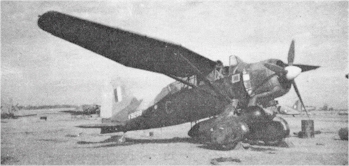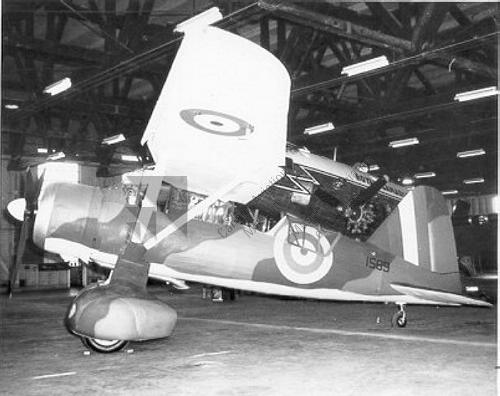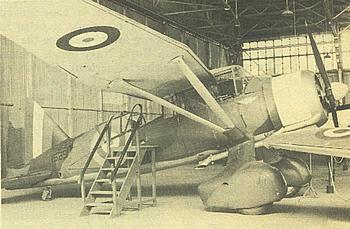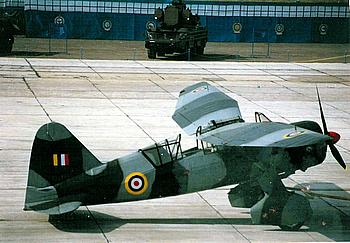Other Units – Service in SEAC, Survivor
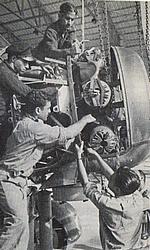 |
The Bristol Perseus XII Radial engine is clearly revealed in this photo of a Lizzie undergoing maintenance somewhere in India |
One of the lesser known facts of the IAF’s History was that in addition to the regular numbered Squadrons in the 1-12 range, there were also Squadrons 101 to 106 for a brief period of time in 1942. These Squadrons of course actually the Coastal Defence Flights which had been re-designated as General Reconnaissance Squadrons in early 1942.
Thus 104 (GR) Squadron, IAF refers to the establishment that started its life as No.4 Flight, IAFVR (Coastal Defence). The flight was raised in 1940. It saw combat service during the Burma campaign under Flt Lt Sprawson, and lost most of its aircraft early on in one of the Japanese air raids on Akyab.
4 Flight was reformed at Calcutta with elements of both Nos 3 Flight and 4 Flight in February 1942. The official communication on this was sent on 17 February 1942 from Air HQ, designating this establishment as No.4 Flight, IAFVR. The aircraft operated three Westland Wapitis out of Dum Dum, under the overall command of Flt Lt D L Small RAF.
After two months of Coastal duties, on 2nd April, the Flight moved to Vizagapatam. Within a couple of days, the Flight was in the thick of operations as the Japanese Fleet sailed into the Bay of Bengal and sent bombing raids on Vizagapatam and Cocanada. The Flight was involved in flying numerous recce sorties – They were the first to detect the Japanese Fleet and also rescued the crew of a merchant ship sunk by the Japanese. However the spate of operations showed their toll on the Wapitis and by the end of April, none of them were in Serviceable condition.
On 30th April 42, Air HQ India Order No. ?1?4/10/Org dated 1.4.42 arrived designating the flight as No.104 (GR) Squadron, Indian Air Force w.e.f 1st April 42. The order also stated that the new Squadron will be equipped with 20 Hudsons. (This is the same order that designated all the other flights as Squadrons). It has been a common mistake in many historical literature, including the Official Indian Armed Forces History of WW2 to refer to 104 GR Squadron as either 104 CDF, IAFVR, or 104 Squadron, Royal Air Force.. Both are incorrect. There was a separate No.104 Squadron RAF in existence, which was based in the Middle east at that time flying the Wellington bomber.
Pending the arrival of the Hudsons, the Squadron was told to collect two Lysanders from No.28 Squadron which was based at Ranchi. On 3rd May, 42, Fg Offr J G Gill RAF led his party to Ranchi to collect these two aircraft. Anticipating the arrival of the aircraft, more personnel were sent to Visagapatam to form the nucleus of the Squadron. On 8th May 42, the first Lysander, N1224 was flown in by Flt Lt Gill with Plt Offr Jaspal as the Observer. The pilots of the Squadron started their solo flights on this aircraft, with Flt Lt Small being the first to do so on the 9th.
On 20th May 42, Plt Offr Joseph crashed while air testing the second Lysander at Ranchi. The aircraft was written off, with the pilot sustaining serious injuries. From then on, No. 104 Squadron had to make do with the single Lysander on strength. On subsequent days, the rest of the Indian pilots on strength, including Plt Offr Belekar, C Singh, and Debra soloed on the aircraft.
To build up the strength, one of the Wapitis was repaired to flight status and used there on in operations. The sole Lysander ran into trouble on 6th June 42, when returning from a patrol over the sea, Flt Lt Gill, with his observer Plt Offr D A Mehta, lost his way. After failing to locate the airfield even after landfall, Gill elected to forceland in a field before darkness set in. The Lysander sunk in soft ground and nosed over. A land party successfully repaired the aircraft on site, and it was flown back to Vizagapatam the next day. However the aircraft was classified as unserviceable pending the replacement of the propeller. The accident cut short the Lysander’s career with the Squadron. For most of the period which 104 Squadron had existed, the aircraft was always AOG. To augment the reduced size of the Squadron, two civilian Tigermoths which were impressed into service were allocated to for operations. An attempt was made to repair the Lysander towards the end of August, but the spares procured for the repair turned out to have been damaged.
On 9th October 42, No.104 Squadron received orders that it will not work up to its full strength but remain at Flight strength till further notice. The Squadron was still continuing its operations using a lone Wapiti and a Tigermoth. On 11th Nov 42, Air HQ Signal 0.69 arrived giving notice of the disbandment of the Squadron at the end of the month. All personnel will be posted to the OTUs for conversion to either fighters or to dive bombers. On completion of training the personnel will be sent to form the core of No.7 Squadron, IAF.
By this time the lone Lysander N1224 had been returned to flying status. When disposal orders arrived, the aircraft was flown to 301 Maintenance Unit at Trichinopoly on 20th Nov 42 to be handed over. Flt Lt J G Gill RAF undertaking this last flight.
On 30th Nov 1942, No.104 GR Squadron, IAF was officially disbanded. The very next day, the personnel, would form the core of No.7 Squadron, IAF along with personnel from No.353 Squadron.
Other Units
The Lysanders were on the verge of vanishing in the Indian Subcontinent by the end of 1943. After the Indian Squadrons had phased them out, the two remaining RAF’s Lysander units, Nos 20 and 28, had also moved onto the Hurricane by the middle of 1943. No. 28 Squadron being the first to do so in late 1942. No.20 completed its conversion to the Hurricane by May 1943.
Many examples were passed onto other training Units in India. No.151 Operational Training Unit (No.151 OTU) at Risalpur received one Lysander on 30th June 42 for Target Drogue Towing Duties. As No.1 Squadron, IAF began Hurricane conversion at that time, Flt Lt Arjan Singh was at hand to ferry the aircraft in from Lahore. A second Lysander was procured a few day slater and a Target Tug Flight was formed with these two Lysanders at Risalpur under 151 OTU.
Other examples went to the No.1 Air Gunnery School (India) at Bairagarh (Bhopal), and a lone example went to No.22 Anti-Aircraft Co-operation Unit, which had its flights dispersed around the country. Yet others formed part of the Group Communication flights. No.221 Group in Dum Dum operating a few examples on its roster. However the Lysander numbers dwindled as the war progressed. And by 1944, sighting one, either at a training unit or at a communication flight was a rarity.
Sometime in late 1944, a requirement for a short field landing and take off aircraft was felt for special duties – i.e. dropping of agents behind enemy lines. The Lysander was employed successfully in this role in occupied France in Europe. It was felt a similar unit would be useful in supporting “Force 136” which was operating behind enemy lines in Burma. Accordingly No.357 Squadron RAF (Special Duties) was chosen for this task. The Squadron then consisted of 10 Liberators and 10 Dakotas. A third flight of 10 Lysanders MkIII(SD) variants was formed in January 1945. These Lysanders were specially equipped with a long range fuel tank underneath the fuselage allowing them to make long flights all the way to Siam. This flight undertook extensive operations from May 1945 to October 1945, flying no less than 1310 hours and 405 operational sorties. Four of their Lysanders were lost over the same period.
With the cessation of hostilities, the Lysanders had one last role to play, dropping Japanese soldiers to far away outposts informing them of the surrender! . On 7th November 45, the C Flight with the remaining Lysanders was reformed as the Burma Communications Squadron. No.357 Squadron itself disbanded on 15th November 1945, thus becoming the last Lysander Unit in the Indian Subcontinent as well as within the Royal Air Force itself.
Lysanders Operated by other Indian Units
| S No | Unit |
| N1224 | No.104 GR Squadron (formerly 4 CDF) |
| N1295 | From 4 Sqn, 151 Operational Training Unit Risalpur. |
| N1315 | 1 (India) Anti Aircraft Cooperation Flight (1 AACF) to 28RAF |
| P9057 | 22 Anti Aircraft Cooperation Unit (22AACU) |
| P9196 | 1 (India) Air Gunnery School |
| R2006 | From 4 Sqn , 1 (India) Air Gunnery School |
| DG445 | 3 (India) Anti Aircraft Cooperation Flight (3 AACF) |
The Lone Survivor
Today, there are about two dozen Lysanders world wide. The vast majority of the survivors originated from Canada, and atleast one of the survivors is operated in flying condition by the Shuttleworth trust in the UK
No Lysanders survived in India by Independence. For years there was no representation of this aircraft at the Indian Air Force Museum in Palam. However today, a fine example of this aircraft can be seen on display at Palam. How did this happen? Krishan Sree Kumar explains the sequence of events in his article at www.warbirdsofindia.com,
The sequence of events which led to India’s acquisition of this example began with the inclusion, among the many overseas student officers attending the Imperial Defence College (now the Royal College of Defence Studies) in the late 1950s, of one E M Reynolds of the Royal Canadian Air Force (later re-designated simply the Canadian Forces), and Arjan Singh of the Indian Air Force. These two officers grew to know each other well, and by 1967 were the Chiefs of their respective countries’ air forces.
In 1967 Air Chief Marshal (now MIAF) Arjan Singh and Air Marshal (later re-designated Lieutenant-General) E M Reynolds arranged for a Canadian-restored Westland Lysander to be gifted to India, and an Indian-restored Liberator to Canada. The two air forces had both operated these types, and were fortuitously able to fill gaps in each others’ museum inventories.
The Lysander was delivered to India crated; but the Liberator was ferried to Canada under its own power. A Canadian Forces crew of six men, led by Colonel A J Pudsey, arrived in India in May 1968, to ferry the aircraft to Canada.
Lysander 1589 was originally being restored by No.402 (Auxiliary) Squadron RCAF as a centennial project before it generously donated to the IAF. It was flown in an Hercules aircraft to Palam in September 1967. The aircraft today can be seen at the Indian Air Force Museum. Over the years, its accurate color scheme of Green and Brown Camouflage has been replaced with a more recent green and grey combination. The aircraft still retains the Canadian serial.
For the visitors of the Museum, the aircraft may not look as ‘exciting’ as the Spitfire or the Tempest. Few of them realize that this was not only the first ‘modern’ aircraft in the IAF at that time, but that it provided the first major baptism of fire for the fledgling air force, and that it gave the IAF its first DFC of the war and the first heroes in the fight against the Axis Forces.
A more upto-date version of this article is avaiable as a Kindle e-book on Amazon

The Westland Lysander in Indian Air Force Service (Aircraft of the Indian Air Force Book 1)
ACKNOWLEDGEMENTS AND SOURCES
This article is dedicated to all aircrew and ground personnel who flew the aircraft into combat – over sixty five years ago! The Author wishes to acknowledge the help of the following veterans, fellow historians and sources.
Lysander Veterans
Air Vice Marshal S N Goyal, Late Air Commodore HS Ratnagar, Air Vice Marshal Ranjan Dutt, Late Air Marshal YV Malse, Air Chief Marshal H S Moolgavkar, Group Captain K S Chopra (Former Observer), Wing Commander H K Patel (Ground Crew – later Pilot ) and Ex-Flt Sgt B H Ghyara (Air Gunner)
Logbooks
Marshal of the Air Force Arjan Singh, Air Marshal A R Pandit
Fellow Historians
John Barrett, Gp Capt A G Bewoor, Sqn Ldr R T S Chhina, Pushpindar Singh Chopra, Deepak Singh, Amit Javadekar, James Kightly, Paul McMillan, Mukund Murty, K S Nair, Mark Ovacik, Suresh Panje, Anandeep Pannu, Naushad Patel, Polly Singh and Frank Powley,
Books
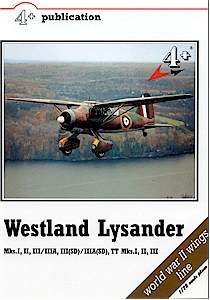 |
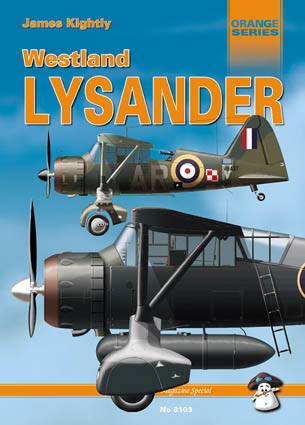 |
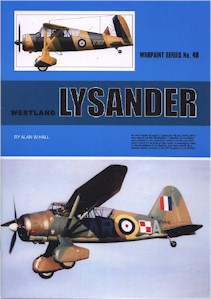 |
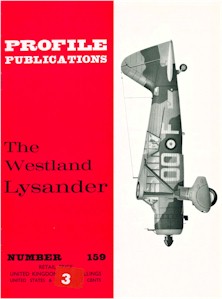 |
| 4+ Publication – Westland Lysander Mks. I, III / IIIA, III(SD), TT Mks. I, II, III Mark Ovacik | MMP Publications Orange #8103 – Westland Lysander James D Kightly & Arthur Juszczak |
Warpaint Series # 48 – Westland Lysander Alan W Hall |
Profile Publications # 159 – Westland Lysander Francis K Mason |
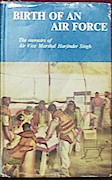 |
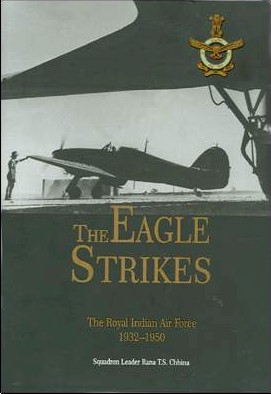 |
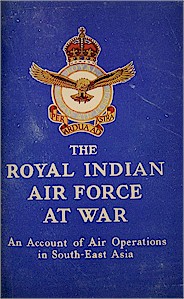 |
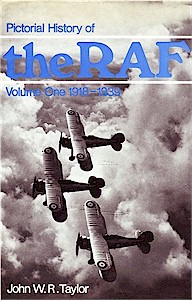 |
| Birth of an Air Force – The memoirs of Air Vice Marshal Harjinder Singh Edited by Air Cmde A L Saigal | THE EAGLE STRIKES : The Royal Indian Air Force 1932-1950 Sqn Ldr R T S Chhina |
The Royal Indian Air Force at War : An Account of operations in South East Asia 1939-45 Unknown |
Pictorial History of the RAF: Volume One 1918-1939 John W R Taylor Arco Publishing |
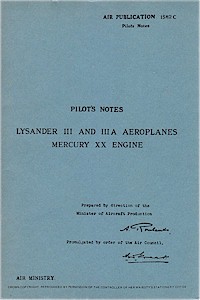 |
|||
| Lysander III and IIIA Aeroplanes- Pilot Notes Air Ministry Publications. |
Other Links
http://www.pilotfriend.com/photo_albums/timeline/ww2/Westland%20Lysander.htm
http://www.burmastar.org.uk/357specialduties.htm#lysander
http://www.warbirdsofindia.com/ovb24-2.html
http://www.warbirds.in/Crashes/crpage.php?qacid=7&qafdb=WW2&datesall=ON (Being Updated)
